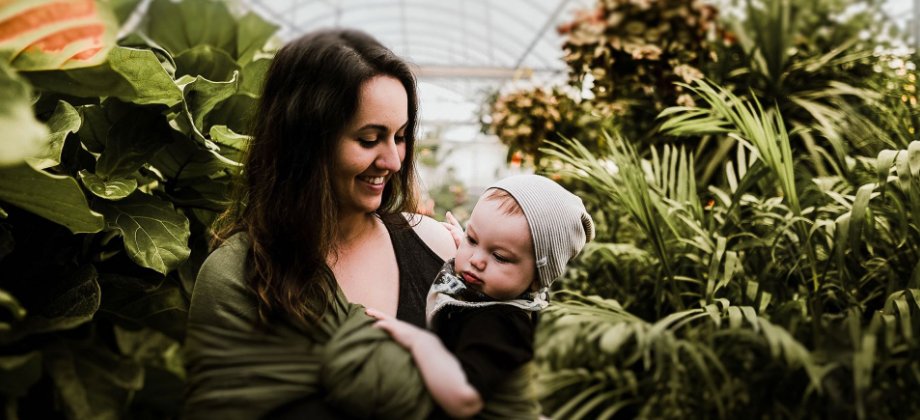
How to Design a Self-Guided Yoga Retreat at Home
We all need restoration and reinvigoration from time to time as we move through life. If you’ve ever wanted to attend a yoga retreat to de-stress or re-center, but found yourself deterred for one reason or another (such as money, time, inconvenience of traveling far away, or all of the above), designing a self-guided yoga retreat at home can be a great alternative.
Decide what you need
First and foremost, decide what you need most out of a yoga retreat experience. Are you feeling overwhelmed at work and your main goal is relaxation? If so, you may choose to design your retreat to include plenty of guided meditations, yoga nidra, and even journaling. Is your body feeling stiff and tired and your main goal for a retreat is restoration? If this is the case, scheduling in a few sessions of restorative and yin yoga along with long walks outside might be a great place to start. Are you looking to cultivate greater energy or inspiration? If so, you might choose to participate in some high-energy vinyasa flows with powerful instrumental music in the background or allot time to trial perspective-shifting poses such as shoulder stands or crow pose.
Whatever route you choose, the most important thing to remember is it is okay if your yoga retreat doesn’t include every possible option under the sun. Having a goal in mind for your outcome can be a great way to whittle your options down to what is going to serve you best. It’s your retreat, so adding in exactly what you need at this moment will help you feel like you’ve gained the most from the experience.
Remember, just like anything, the first try is a learning experience, and with each iteration, you will grow and feel more comfortable and confident along the way.
Take Stock of Your Resources
In order to design a true retreat, it’s important to first take time to consider all of your available resources that you can use to support your experience. Resources include everything from time to money to physical props and available space. For example, what time do you have to allot to your retreat? To help you have the adequate amount of time you’d like, what help might you have available with have-to tasks? Can you delegate some things to your partner, hire a babysitter or have grandparents take the kids for the day, or use a grocery delivery service instead of taking the time to do a shopping trip?
Another important resource to consider are the props you have at your disposal. Take stock of props you may already have available or ones that you can buy or borrow such as blocks, bolsters, blankets, essential oils, and of course, a mat. Lastly, consider your available space to designate for your retreat. If you choose to delve into your retreat at home, consider creating a space to transport you into the experience, such as curating the guest room into a cozy environment with a salt lamp or other low lighting, temporarily taking down any wall decor to reduce distractions, or even build yourself a fort in the living room if you want to!
If you feel like focusing within your home environment is difficult, and the weather outside is pleasant, you may choose to pack a bag with your retreat supplies and set up a blanket under a tree at a local park for the afternoon. Or, if you have the funds and desire to do so, you may also choose to rent a local Airbnb or VRBO space to have a true shift in environment and headspace.
Make a Plan
The most important piece of designing your at-home DIY yoga retreat is of course, deciding what you plan to do. If you have a full weekend available for your retreat, here is an example itinerary you could design:
On Friday night, you may choose to participate in a restorative yoga class via YouTube, then end the evening with some journaling and tea, followed by a 20-30 minute meditation. On Saturday morning, you might decide to do a self-guided vinyasa flow outside or near a sunny window and follow it up with a grounding activity like a barefoot walk. In the afternoon, you may designate time to sit for a guided meditation and end with an evening of mindful cooking and eating. On Sunday morning, you may decide to begin the day with some quiet journaling and yin yoga, focus on breathwork in the early afternoon before lunch, and end the experience with gratitude journaling and visioning for your path forward.
When designing your retreat, make sure to decide in advance what things you plan to avoid in order to fully immerse yourself in the experience, just as you might on a retreat that you’d attend somewhere else. Will you decide to make your retreat a silent one focused fully on introspection? Will you make your retreat one focused on digital detoxing and avoiding social media, reading and responding to emails, online shopping, and what have you? If so, make sure to tell friends and family in advance so you won’t be interrupted by your phone, and those close to you won’t worry if they don’t hear from you for a day or two. To help tame the urge to pick up your phone and scroll, consider putting it on Do Not Disturb mode, deleting any apps that you find distracting, or even putting your phone in a drawer in another room for your retreat-focused time.
Once you have a structured outline of what you’d like to do during your self-guided yoga retreat at home, put it in a place that is easy for you to reference. Because your experience is self-guided, you may consider setting timers for yourself with notes to help you stay on track and engaged with what you’ve planned. If you’re aiming to reduce your screen time, consider writing it down on a piece of paper or recording it in a planner.

Work the Plan
For some people, making a plan is the most difficult step. But for others, it feels much harder to implement the plan they’d originally imagined. It’s okay if you find your energy shifting from what you originally thought or if you find yourself more drawn to flowing and moving instead of sitting still and meditating. Remember, this retreat is yours, and the plan can change and flex with you. Once you have your plan, start by following it and adjusting it if needed. If you get off track, pick up where you left off or wherever feels natural. If you feel overly constrained or restricted by the structure of a retreat plan, maybe write yourself a note that reminds you that plans can change, or simply make a loose list of things you’d like to do during your retreat with no set schedule. As you move through your retreat weekend, continue listening to your intuition and be confident that however it goes is how it is supposed to go.
Reflect
After you’ve hosted your first self-guided yoga retreat at home for yourself, take a few minutes to reflect. How do you feel after the experience? What did you gain or lose? What would you change if you decided to do it again? Did you enjoy a solo experience, or would you like to involve a friend next time? Write all of your thoughts down while the experience is fresh. This way, should you plan to create a new at-home retreat in the future or offer tips to a friend, you have a great reference of all the little details that you may forget with time.
Yoga should feel accessible to everyone no matter what their resources or experience level. If you’ve always dreamed about attending a yoga retreat, consider offering one to yourself as a first try and seeing how it goes. Remember, just like anything, the first try is a learning experience, and with each iteration, you will grow and feel more comfortable and confident along the way.






